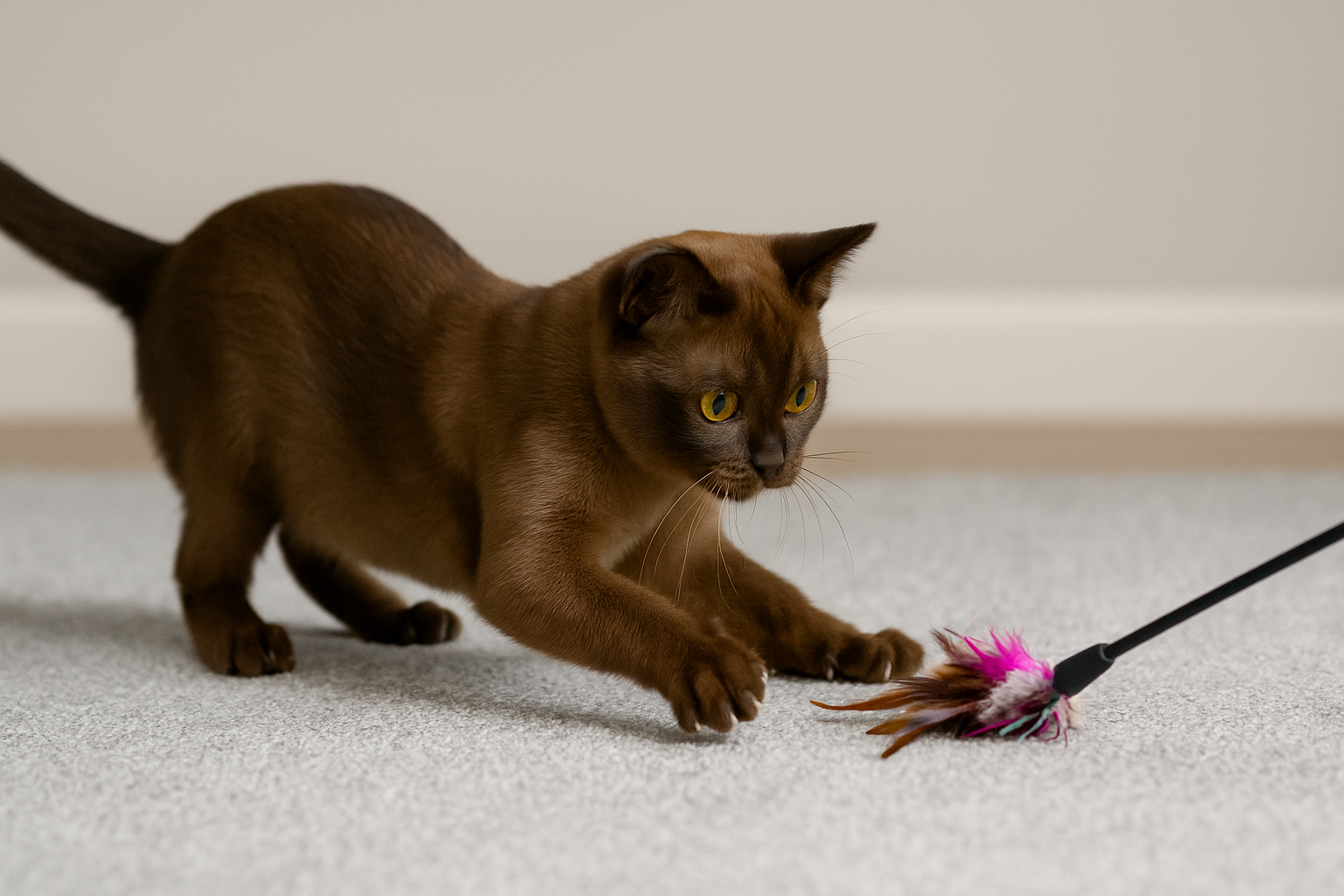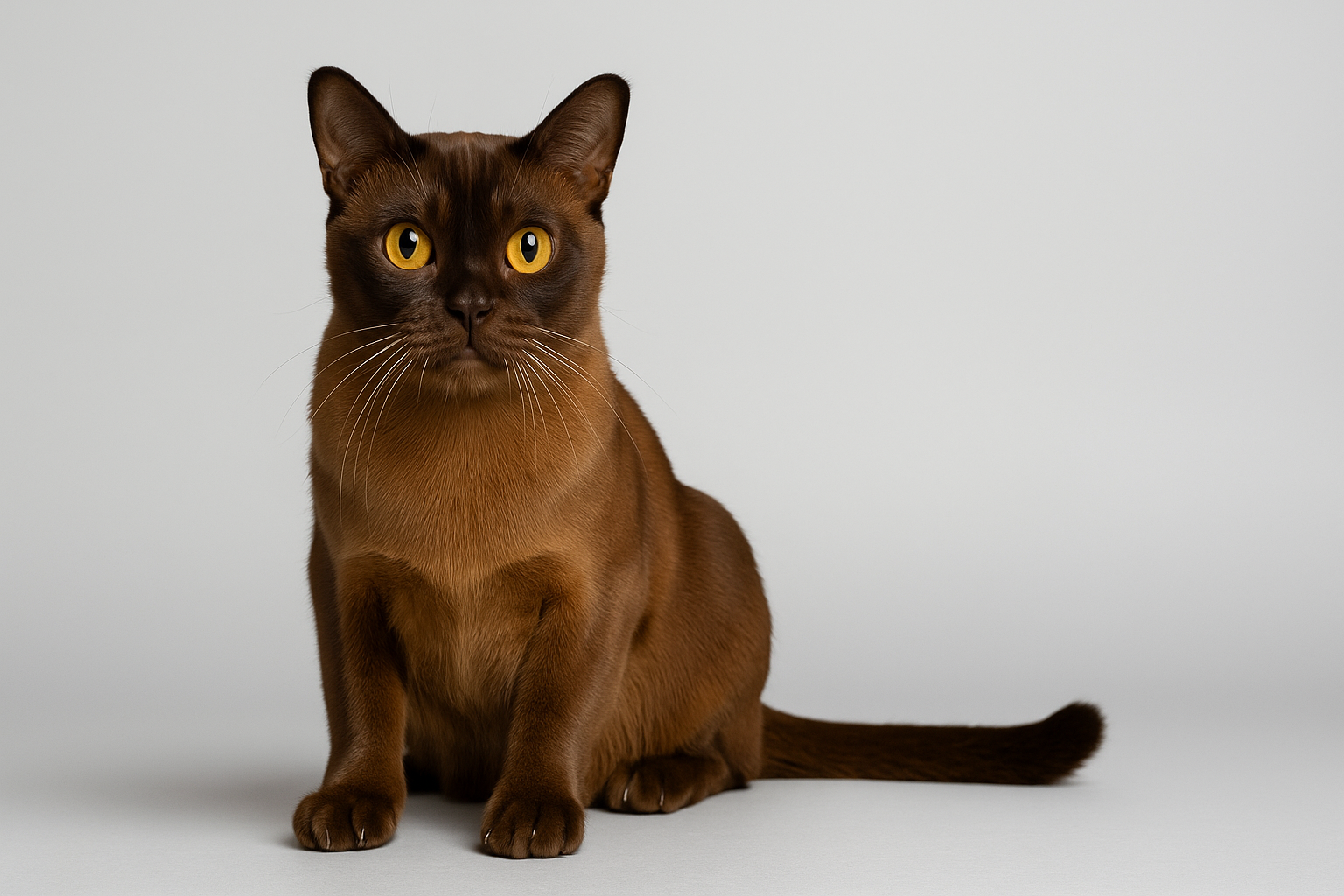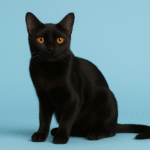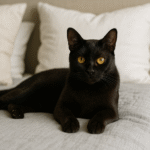The Burmese cat is often described as a “brick wrapped in silk”—a compact, muscular feline with a glossy coat and a personality that melts hearts. Loyal, playful, and full of charm, Burmese cats love being in the spotlight—and by “spotlight,” we mean your lap. With their golden eyes and people-focused nature, they bring a perfect mix of beauty and companionship into any home.
These cats aren’t content to sit on the sidelines. Burmese cats want to be part of everything you do—whether that’s following you from room to room, curling up on your lap, or chirping for attention when you walk in the door. They’re family-friendly, affectionate, and endlessly curious, making them a favorite choice for anyone who wants a cat that feels more like a true best friend.
Quick Breed Facts
- Origin: Burma (Myanmar); developed in the U.S. and U.K.
- Breed registries: CFA, TICA, FIFe, GCCF, ACFA
- Weight range: 8–12 lbs (males), 6–10 lbs (females)
- Lifespan: 12–18 years
- Coat: Short, sleek, satin-like
- Colors and patterns: Solid sable, champagne, blue, platinum (more in U.K. lines)
- Eye color: Gold to deep yellow
- Grooming: Low-maintenance
- Activity level: Moderate to high
- Affection level: Very high
- Vocality: Talkative
- Good with children: Yes
- Good with other pets: Yes
History and Origin of the Burmese Cat
The story of the Burmese cat begins with a little walnut-brown cat named Wong Mau, who was brought from Burma (now Myanmar) to the U.S. in the 1930s. When paired with Siamese cats, she produced kittens that looked different from either parent—sleek, muscular, and with a glossy brown coat. Cat lovers quickly realized they had something special, and the Burmese breed was born.
Over time, breeders in the U.S. and U.K. developed slightly different styles. American Burmese cats grew stockier with rounder features, while British lines allowed more colors and kept a leaner look. No matter the type, what never changed was their affectionate, people-loving personality—one of the biggest reasons the Burmese is adored worldwide today.
Burmese Cat Characteristics
Burmese cats have a compact, muscular build that gives them a solid, athletic look while still feeling silky and refined. Their rounded head, expressive golden eyes, and strong yet graceful form make them one of the most striking cats in the feline world. Their coat colors range from rich sable to champagne, blue, and platinum—each gleaming with a unique satin-like sheen.
But it’s not just about looks—Burmese cats are social, affectionate, and deeply people-oriented. They thrive on interaction and often form strong bonds with their families, sometimes even following one person around like a shadow. Friendly with strangers and confident in new situations, they rarely hide away when guests arrive. If you want a cat that will be by your side rather than napping in another room, the Burmese is an excellent choice.
Activity & Play
Burmese cats may look sleek and polished, but inside they’re playful, curious, and kitten-like well into adulthood. Many enjoy games of fetch, chase, and even hide-and-seek. They’re agile climbers and often perch on shelves, window sills, or the top of a cat tree to keep an eye on the action. Don’t be surprised if your Burmese brings you a toy as a not-so-subtle hint that it’s time for play.
Their high intelligence means they also benefit from daily enrichment and mental stimulation. Without enough activity, they can get bored—and a bored Burmese may turn to mischief. Puzzle feeders, wand toys, and interactive play sessions are essential. A tall cat tree (like those in our Luxury Cat Trees guide) is perfect for giving them vertical space to climb and lounge while staying close to their humans.

Grooming Needs and Coat Care
One of the Burmese cat’s best qualities is its low-maintenance grooming. Their short, fine coat requires little upkeep and rarely mats. A quick brushing once a week is enough to keep their fur glossy and healthy, and most Burmese cats enjoy the extra attention. Unlike long-haired breeds, they shed minimally and are easy to keep tidy with regular grooming sessions.
Grooming also doubles as a health check and bonding opportunity. Use brushing time to look for skin issues, fleas, or other concerns. Don’t forget nail trims, ear checks, and dental care, since Burmese cats benefit from consistent maintenance. Because they can be picky about their litter, keeping the box clean is important—unscented litter works best. (For easy cleanup, see our guide to the best litter disposal systems.)
Health & Lifespan of the Burmese Cat
Burmese cats are generally healthy and can live 12–18 years, with many reaching their twenties with good care. Still, like all breeds, they have a few quirks to keep an eye on. Some Burmese carry a gene linked to craniofacial abnormalities, though careful breeding has made this far less common. Another condition seen from time to time is feline hyperesthesia syndrome, which can cause twitching skin or sudden bursts of activity. It sounds dramatic, but with a vet’s guidance, it’s usually manageable.
They may also be a bit more prone to diabetes, especially if they’re carrying extra weight. A balanced, high-protein diet and plenty of playtime are the best prevention. And because of their Siamese roots, Burmese cats can inherit a few genetic conditions. Choosing a responsible breeder who screens for health problems is key. For a deeper dive, see our article on inherited disorders in cats. With regular checkups and lots of love, most Burmese cats live long, happy lives right alongside their families.
Family Compatibility
Burmese cats are among the best family companions. They bond deeply with their people and thrive in homes where someone is around most of the time. They’re affectionate, loyal, and thrive on attention, often curling up in laps or following family members around the house. Their social nature means they’re less likely to be shy with guests compared to many other breeds.
They do well with children who understand how to handle pets gently, and they’re patient enough to be part of an active household. Seniors also appreciate their affectionate, easygoing personalities. Burmese cats adapt well to living with other cats and even cat-friendly dogs when introduced properly. If you’re often away from home, consider adopting two cats so they can keep each other company—Burmese don’t like being left alone for long stretches.
Recommended Supplies for the Burmese Cat
Burmese cats are playful, intelligent, and deeply people-oriented, so the right supplies help keep them happy and engaged. Along with the basics like a comfy bed and a reliable litter box, you’ll want to add enrichment items that challenge their minds and support their active nature.
- A soft, warm bed or heated pad
- Tall cat trees and climbing furniture
- Interactive toys like feather wands and puzzle feeders
- Food and water bowls that don’t press against their whiskers
Final Thoughts
If you’re looking for a cat that’s affectionate, intelligent, and stunningly sleek, the Burmese is an excellent choice. They’re playful and charming, yet also deeply loyal, making them one of the most people-focused breeds you can welcome into your home. Their expressive golden eyes and silky coats only add to their appeal.
From their origins in Burma to their role as beloved companions today, Burmese cats bring warmth, joy, and energy into every household. Whether you live alone and want a devoted companion or have a bustling family, the Burmese is sure to fit right in and steal hearts along the way.
Burmese Cat FAQs
Are Burmese cats hypoallergenic?
No, Burmese cats are not considered hypoallergenic. Their short coat and minimal shedding may make them easier on mild allergy sufferers, but they still produce allergens like all cats.
What do Burmese cats eat?
Burmese cats thrive on a high-protein diet made mostly from animal sources. Premium wet or dry cat food without fillers or artificial additives is ideal. Some owners prefer wet food to support hydration and urinary health.
What is the average lifespan of a Burmese cat?
On average, Burmese cats live 12–18 years, though with excellent care it’s not uncommon for them to reach 20 years or more.
What are the main Burmese cat characteristics?
Burmese cats are affectionate, intelligent, vocal, and muscular. They have a short, shiny coat, expressive golden eyes, and a personality that makes them loyal companions.
How much does a Burmese cat cost?
Expect to pay $1,000–$1,500 for a pet Burmese kitten, with show-quality cats sometimes costing more. Rescue organizations may offer more affordable options for those looking to adopt.







